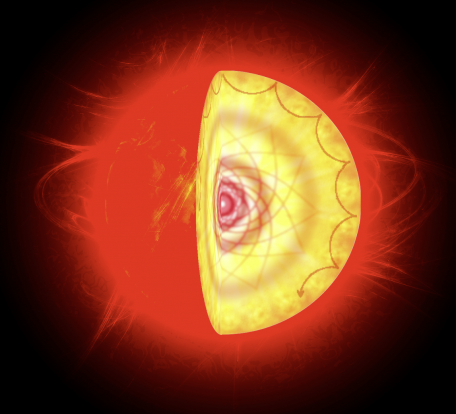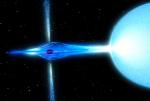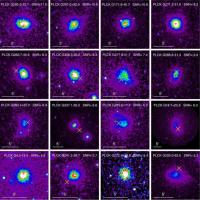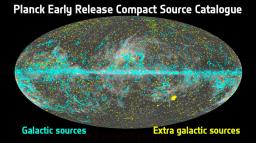News 2011
Thanks to the data of the NASA Kepler satellite, an international team including Rafael Garcia of the Astrophysical Department at CEA-Irfu [1], succesfully probe the heart of hundreds of giant stars for the first time. The researchers used stellar seismology to analyze very small oscillations in surface brightness to infer the characteristics of the heart of the stars. In the large sample studied, they have managed to distinguish where the nuclear fusion reactions take place, in the core of the stars or in a surrounding shell. This is a major discovery for the understanding of the stars because so far nothing helped the astronomers to isolate these evolutionary stages corresponding to a different stage in the life of a star. The results are published in the journal Nature of March 31, 2011.
 |
The concert of red giants (mp3) Listen to the vibrations of giant stars translated into audible sounds according to their actual frequencies: listen to three stars of increasing size [1'00], Crédits Daniel Huber (Univ. Sydney 2011) |
Waves traveling inside the core of a giant star have been discovered by a international team of researchers including Rafael A. Garcia, member of the Service d'Astrophysique of CEA-Irfu [1]. The results were obtained using 320-day observations of the Kepler satellite by means of stellar seismology. These waves, known as gravity modes, produce very small changes in the brightness at the surface of the star. The vibrations of the star offer the possibility of measuring the density, chemical composition, and the internal rotation of the star otherwise inaccessible. So far, these waves could only be unveiled for the Sun. The Sun will become a red giant in about 6 billion years. This discovery thus provides a crucial diagnosis on the future of our star. These results are published in Science- magazine on March 17, 2011.
Prototype of the X-ray binary systems harboring a black hole, Cygnus X-1 is the subject of many studies since its discovery in the 1960s. By studying its behavior at high energy, an international team led by Philippe Laurent, astrophysicist at the Service d'Astrophysique of the CEA-Irfu and laboratory APC discovered a surprising property of the light emitted by the system, a high degree of polarization. This feature requires a particular organization of the emissive medium and researchers locate this emission at the base of the already observed compact radio jet, close to the horizon of the black hole. This work, based on data collected by the telescope Integral/Ibis, is published in the journal Science Express on 24 March 2011.
An international team, including scientists from the Astrophysics Department-AIM and the Particle Physics Department of CEA-Irfu, has just used the Planck satellite to discover galaxy clusters with characteristics that were previously unknown. These clusters, which contain up to a thousand galaxies, are the largest structures in the Universe. Many of them are located very far away from us, and we still know relatively little about them. Astrophysicists were able to detect the new clusters thanks to the imprint left in the background radiation of the universe by the hot gas from the clusters. Of the 189 clusters detected by Planck at distances from 1 to 5 billion light-years, 20 were previously unknown. Thanks to a joint program with the XMMNewton x-ray satellite, some of these new clusters could be observed, revealing weaker luminosity and a highly perturbed gas distribution. These must therefore be clusters with different characteristics.
These results were presented at a scientific colloquium on results from the Planck satellite, held from 10th to 14th January 2011 in Paris. They were published in a special issue of Astronomy & Astrophysics.
For a more detailed account, see also the French version.
The scientific community had to wait 18 months for the data collected by Planck, the European Space Agency satellite. Now, the first scientific results are in. The first edition of the compact sources catalog (ERCSC, Early Release Compact Sources Catalogue), with several thousand sources detected by Planck, has been published and presented in the context of an international colloquium, held from 11th to 14th January 2011 at the Cité des Sciences et de l'Industrie in La Villette (Paris).
Read the joint press release from CNES, CNRS, CEA, and ESA
Also refer to the program of the colloquium
|
Contact:
|





